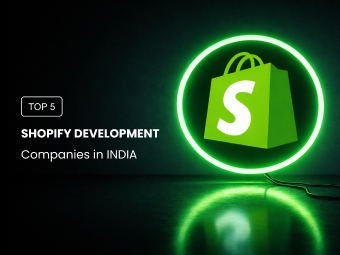The last few years have seen direct-to-consumer (DTC) e-commerce change the face of the world by bringing the brand directly to the customer. By removing the intermediaries, brands gain control over their messaging, customer experience, and pricing. In today’s more individualized, open, and convenient environment, DTC is no longer a business model but rather a movement. In today’s more individualized, open, and convenient environment, DTC is no longer a business model but rather a movement.
As the landscape moves rapidly into 2024, emerging trends mold the future of DTC e-commerce. In this blog, we will explore some top 10 trends that change the game and redefine the rules
1. The Rise of Subscription-Based Models
Subscription services have evolved from what they used to be – reserved for media streaming and software platforms; now, they lie at the heart of DTC e-commerce. The simple reasons are that consumers love convenience, predictability, and the allure of receiving curated products tailored to their needs.
This is where Dollar Shave Club and BarkBox stand out: every month brings a new supply of merchandise based on that customer’s unique preferences. Subscriptions have become a two-way street for DTC brands. Customers get a recurring, hassle-free purchase, while the company receives a predictable, flowing income source.
Why does it matter in 2024? Predictability in cash inflows and the possibility of establishing long-term consumer relationships will be a deep-rooted trend.
2. Hyper-Personalization through AI and Data Analytics
In 2024, personalization will be required rather than optional. The modern client expects businesses to know them better than they know themselves, to know which items to promote, which information to deliver, and which offers to provide at the appropriate moment. By utilizing AI and data analytics, DTC can provide each consumer with a personalized experience.
For example, Stitch Fix uses AI-powered recommendations to find the perfect-fitting clothes for its clients’ tastes and body types, ensuring a seamless shopping experience. Research shows that 80% of customers are more likely to make a purchase when their experience is personalized.
3. Social Commerce: The Power of TikTok and Instagram Shopping
Social media is no longer just selfies; it’s a commerce powerhouse: platforms like TikTok and Instagram are becoming integral components of the DTC ecosystem, further empowering social commerce. This enables consumers to discover products and purchase them directly from their feeds without friction between finding and purchasing.
Other brands are capitalizing on this trend by utilizing TikTok’s unique algorithm to reach younger target audiences. In other words, TikTok Shop and Instagram Shopping are turning passive browsing into active buying.
If your brand does not participate in social commerce, you are missing out on money.
4. Ethical and Sustainable Commerce
Sustainability is no longer a trend – it’s an expectation. The buyer’s psyche has dramatically shifted toward the eco-awareness of the most recent past, and there is the resultant pressure to estimate sustainability as shaping every brand in the long term. Some direct-to-consumer companies like Allbirds and Everlane are driving the change by championing transparency in supply chains and using ecologically friendly materials.
This means that in 2024, transparency and sustainability will be critical, and it remains to be seen whether businesses can win over the hearts and wallets of the next generation of customers.
5. Omnichannel Strategies: Bridging Online and Offline Shopping
Contrary to what most people might think, DTC doesn’t exist only in the digital space. Increasingly, DTC brands are driving into physical spaces – from pop-up shops to full-blown stores. Warby Parker is an interesting example: It successfully integrated both an online presence and physical locations where clients can try on glasses before buying.
This omnichannel strategy has not only benefited the customer experience, but it also helps firms acquire more data and communicate with customers on various fronts.
6. Influencer-Led Marketing: Micro-Influencers on the Rise
Influencer marketing is a very old component of DTC, but changing times favor micro-influencers. Although big celebrities attract crowds, the authenticity that people demand lies behind a few active and engaged followers of the micro-influencer. Mejuri and Casper could collaborate with the micro-influencers to make the endorsements more relatable and authentic.
Why? As per research, micro-influencers have much higher engagement rates than bigger influencers, making DTC brands feel secure in spending to connect to niche audiences.
7. Seamless Mobile Experiences
As we live in a mobile-first world, it should come as little surprise that 54% of e-commerce sales will come from mobile. The consumer expects fast-loading navigation, a seamless mobile site experience, and easy checkout. To remain competitive, DTC brands must continue to optimize their mobile experiences.
Take Shopify, for example—it is at the forefront of mobile-first e-commerce and offers tools that make it easy for DTC brands to create mobile-optimized stores.
8. Experiential E-commerce: Virtual Try-Ons and Augmented Reality
Those are no longer dystopian dreams; instead, they are tools DTC brands are actively using to help enrich the experience of online shopping. As mentioned earlier, virtual try-ons and AR-powered product demos can bring an in-store experience into a digital space.
Sephora’s virtual try-on application lets customers know how the makeup will look on their skin without going into the physical store. This is why IKEA’s app takes the use of AR to the next level. It helps the user envision furniture in their home before buying it. Studies report that using AR tools aids in conversion with improved conversion rates of up to 40%.
9. Direct Community Engagement via Owned Platforms
Owning the customer relationship is the game’s name in DTC, and one of the best ways to do that is through community building. DTC brands are stepping away from third-party channels and investing directly in their products: newsletters, exclusive content, and community forums.
This Peloton has performed outstandingly by developing an active community where users interact with each other through their applications and forums. Glossier, too, developed a sense of community by transcending their product line.
10. Expanding Global Markets with Localized Approaches
Global expansion represents the new horizon for DTC brands, but it means more than just translating a website into another language and exporting one product to another region. Localization refers to everything from language and currency to shipping preferences and marketing strategies.
Shopify, for example, has regionally adapted payment solutions and region-specific tools to help DTC brands scale internationally. This means that brands will have to learn the localized approach to gain ground in international markets since cross-border e-commerce sales are expected to hit $1 trillion by 2025.
Conclusion
E-commerce is changing DTC e-commerce at breakneck speed, and 2024 will be an experimental season; in a very fast-changing industry, some brands already stand out by pushing personalization, sustainability, or seamless mobile experiences to the forefront of today’s competitive market.
In a world where the DTC model continues to dictate how consumers shop, one cannot but feel that this is a future in which adaptability and evolution first take precedence for brands as they seek to build even more significant connections with the community.
What are some of those trends your brand will embrace this year?
FAQ’s
DTC retail is a business model in which brands sell directly to consumers, bypassing third-party retailers. This allows marketers complete control over their consumer experience and price.
The use of artificial intelligence to provide customized product recommendations and offers is a major trend. By studying client preferences and behavior, brands may provide a more personalized shopping experience, resulting in increased customer satisfaction and sales.
DTC brands sell their items directly to consumers, removing the need for intermediaries such as stores. This technique gives them control over their price and customer experience. Examples include Warby Parker, Dollar Shave Club, and Glossier.
An omnichannel strategy includes both online and offline buying experiences. It enables DTC brands to communicate with customers across numerous touchpoints, including websites, physical stores, and pop-up shops, resulting in a more seamless purchasing experience.
DTC is expected to grow significantly, driven by consumer preferences for personalized shopping and direct brand contact. As more brands embrace this approach and use technology, DTC sales are expected to rise drastically, taking a larger share of the e-commerce market.




